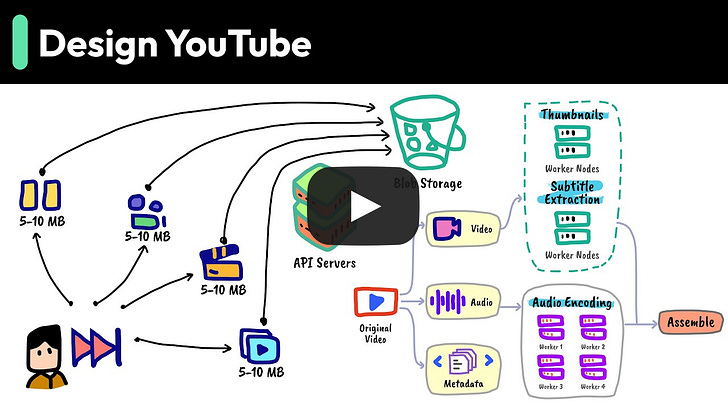|
The Real Benefits of End-to-End Observability (Sponsored)
How does full-stack observability impact engineering speed, incident response, and cost control? In this ebook from Datadog, you'll learn how real teams across industries are using observability to:
Reduce mean time to resolution (MTTR)
Cut tooling costs and improve team efficiency
Align business and engineering KPIs
See how unifying your stack leads to faster troubleshooting and long-term operational gains.
This week’s system design refresher:
System Design: Design YouTube (Youtube video)
9 Docker Best Practices You Should Know
Kubernetes Explained
N8N versus LangGraph
Where Do We Cache Data?
ByteByteGo Technical Interview Prep Kit
SPONSOR US
System Design: Design YouTube

9 Docker Best Practices You Should Know
Use official images
This ensures security, reliability, and regular updates.Use a specific image version
The default latest tag is unpredictable and causes unexpected behavior.Multi-Stage builds
Reduces final image size by excluding build tools and dependencies.Use .dockerignore
Excludes unnecessary files, speeds up builds, and reduces image size.Use the least privileged user
Enhances security by limiting container privileges.Use environment variables
Increases flexibility and portability across different environments.Order matters for caching
Order your steps from least to most frequently changing to optimize caching.Label your images
It improves organization and helps with image management.Scan images
Find security vulnerabilities before they become bigger problems.
Over to you: Which other Docker best practices will you add to the list?
Kubernetes Explained
Kubernetes is the de facto standard for container orchestration. It automates the deployment, scaling, and management of containerized applications.
Control Plane:
API Server: Acts as the communication hub between users, the control plane, and worker nodes.
Scheduler: Decides which Pod runs on which Node.
Controller Manager: Keeps the cluster state in sync.
etcd: A distributed key-value store that holds the cluster’s state.
Worker Nodes:
Pods: The smallest deployable unit in Kubernetes, representing one or more containers.
Container Runtime: The engine (like Docker or containerd) that runs the containers.
kubelet: Ensures containers are running as defined in Pods.
kube-proxy: Handles networking between Pods and ensures communication.
Over to you: What’s the toughest part of running Kubernetes in production?


